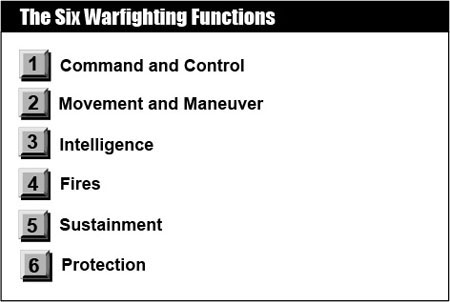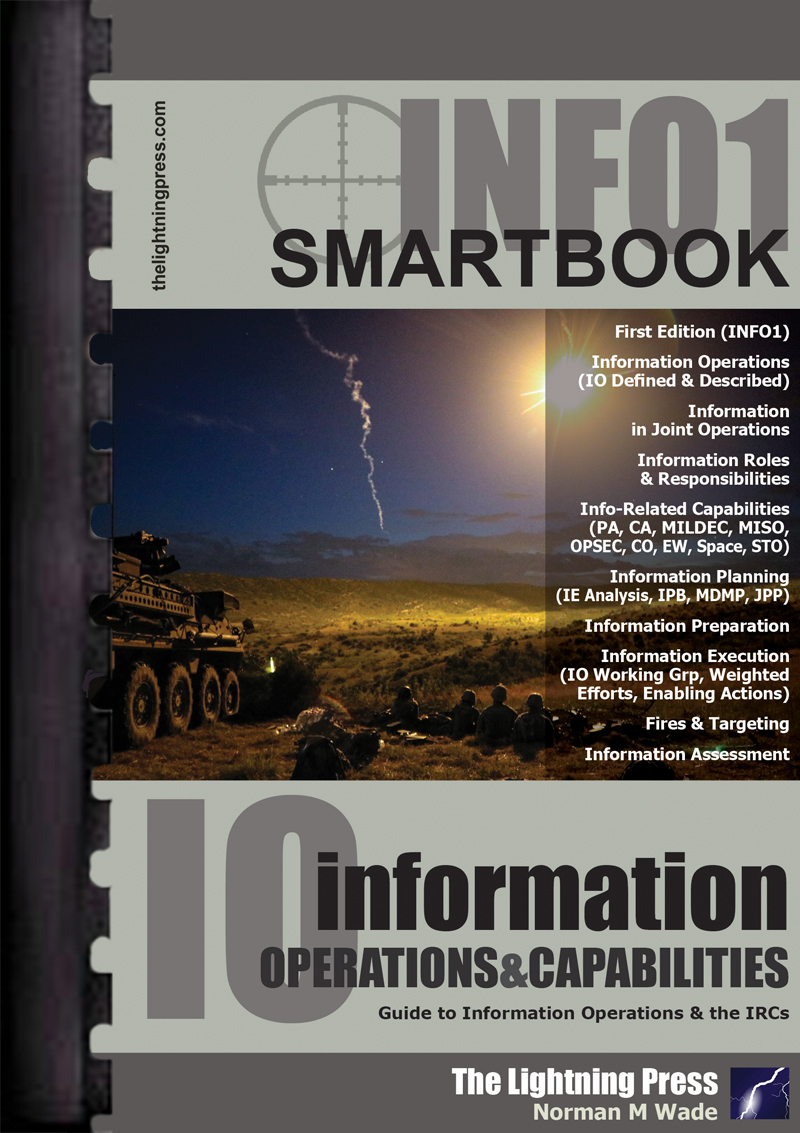Multidomain operations are the combined arms employment of joint and Army capabilities to create and exploit relative advantages that achieve objectives, defeat enemy forces, and consolidate gains on behalf of joint force commanders (JFC). Employing Army and joint capabilities makes use of all available combat power from each domain to accomplish missions at least cost. Multidomain operations are the Army’s contribution to joint campaigns, spanning the competition continuum.
To execute operations, commanders conceptualize capabilities in terms of combat power. Combat power has eight elements: leadership, information, mission command, movement and maneuver, intelligence, fires, sustainment, and protection. The Army collectively describes the last six elements as the warfighting functions. Commanders apply combat power through the war fighting functions using leadership and information.
Commanders use the warfighting functions to help them exercise command and to help them and their staffs exercise control. A warfighting function is a group of tasks and systems (people, organizations, information, and processes) united by a common purpose that commanders use to accomplish missions and training objectives. All warfighting functions possess scalable capabilities to mass lethal and nonlethal effects. The Army’s warfighting functions link directly to the joint functions.

Command & Control Warfighting Function (ADP 6-0)
The command and control warfighting function is the related tasks and a system that enable commanders to synchronize and converge all elements of combat power. The primary purpose of the command and control warfighting function is to assist commanders in integrating the other elements of combat power to achieve objectives and accomplish missions. (See chap. 3.)
C Movement and Maneuver (ADP 3-90 & others)
The movement and maneuver warfighting function is the related tasks and systems that move and employ forces to achieve a position of relative advantage over the enemy and other threats. Direct fire and close combat are inherent in maneuver. The movement and maneuver warfighting function includes tasks associated with force projection related to gaining a position of advantage over the enemy. Movement is necessary to disperse and displace the force as a whole or in part when maneuvering. Maneuver is the employment of forces in the operational area. (See chap. 4.)
Intelligence Warfighting Function (ADP 2-0)
The intelligence warfighting function is the related tasks and systems that facilitate understanding the enemy, terrain, and civil considerations. This warfighting function includes understanding threats, adversaries, and weather. It synchronizes information collection with the primary tactical tasks of reconnaissance, surveillance, security, and intelligence operations. Intelligence is driven by commanders and is more than just collection. Developing intelligence is a continuous process that involves analyzing information from all sources and conducting operations to develop the situation. (See chap. 5.)
Fires Warfighting Function (ADP 3-19)
The fires warfighting function is the related tasks and systems that create and converge effects in all domains against the threat to enable actions across the range of military operations. These tasks and systems create lethal and nonlethal effects delivered from both Army and Joint forces, as well as other unified action partners. (See chap. 6.)
Sustainment Warfighting Function (ADP 4-0)
The sustainment warfighting function is the related tasks and systems that provide support and services to ensure freedom of action, extend operational reach, and prolong endurance. The endurance of Army forces is primarily a function of their sustainment. Sustainment determines the depth and duration of Army operations. It is essential to retaining and exploiting the initiative. Sustainment provides the support necessary to maintain operations until mission accomplishment. (See chap. 7.)
Protection Warfighting Function (ADP 3-37)
The protection warfighting function is the related tasks and systems that preserve the force so the commander can apply maximum combat power to accomplish the mission. Preserving the force includes protecting personnel (combatants and noncombatants) and physical assets of the United States and multinational military and civilian partners, to include the host nation. The protection warfighting function enables the commander to maintain the force’s integrity and combat power. Protection determines the degree to which potential threats can disrupt operations and then counters or mitigates those threats. (See chap. 8.)
 This article is an extract from "AODS7: The Army Operations & Doctrine SMARTbook, 7th Ed. (Multidomain Operations)" by The Lightning Press. Download a free PDF sample and learn more at: AODS7: The Army Operations & Doctrine SMARTbook, 7th Ed. (Multidomain Operations).
This article is an extract from "AODS7: The Army Operations & Doctrine SMARTbook, 7th Ed. (Multidomain Operations)" by The Lightning Press. Download a free PDF sample and learn more at: AODS7: The Army Operations & Doctrine SMARTbook, 7th Ed. (Multidomain Operations).
Browse additional military doctrine articles in our SMARTnews Blog & Resource Center.
About The Lightning Press SMARTbooks. Recognized as a “whole of government” doctrinal reference standard by military, national security and government professionals around the world, SMARTbooks comprise a comprehensive professional library. SMARTbooks can be used as quick reference guides during operations, as study guides at education and professional development courses, and as lesson plans and checklists in support of training. Browse our collection of Military Reference SMARTbooks to learn more.











































